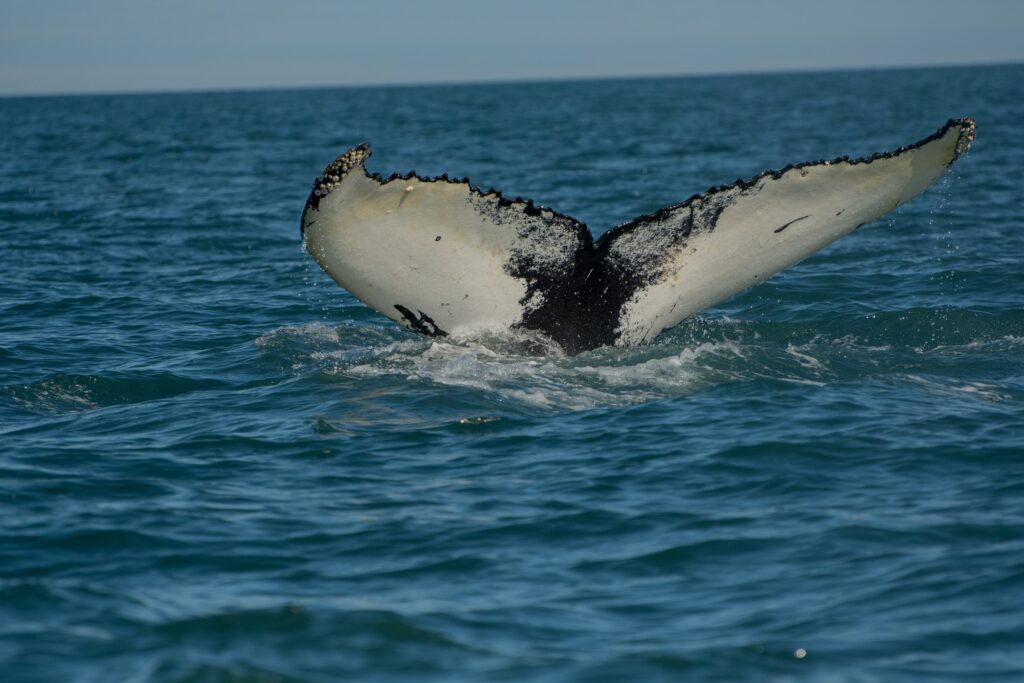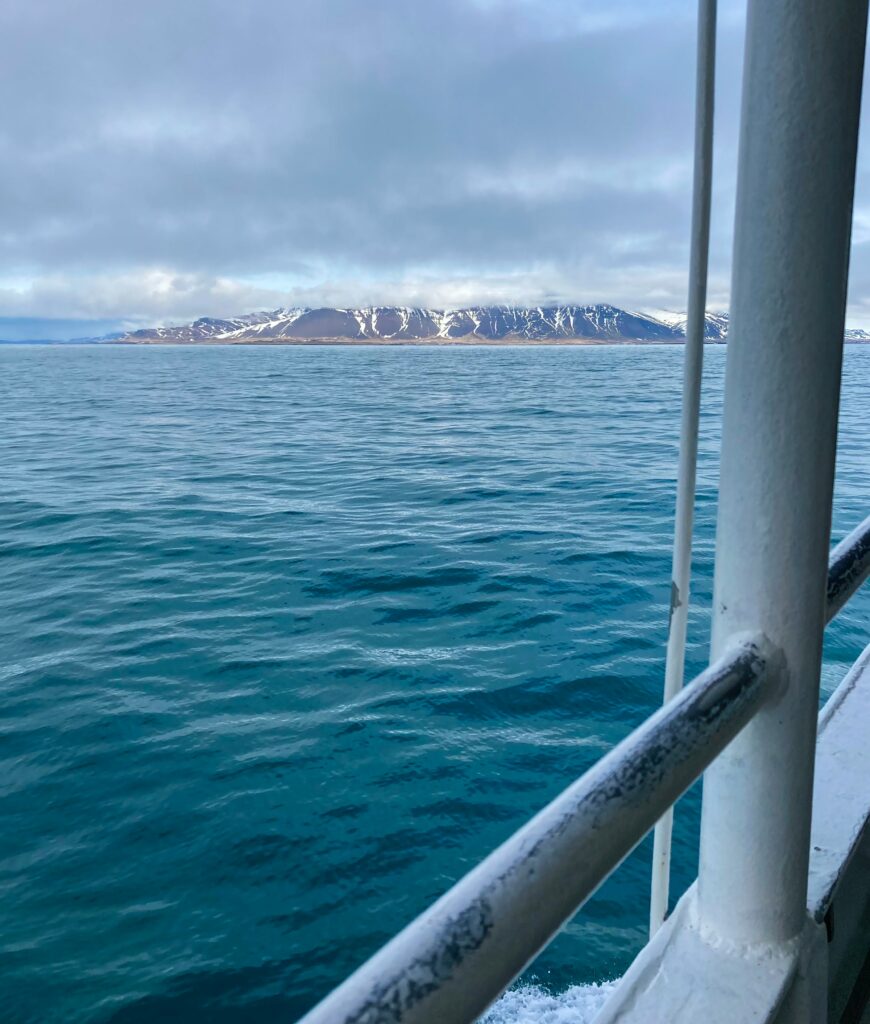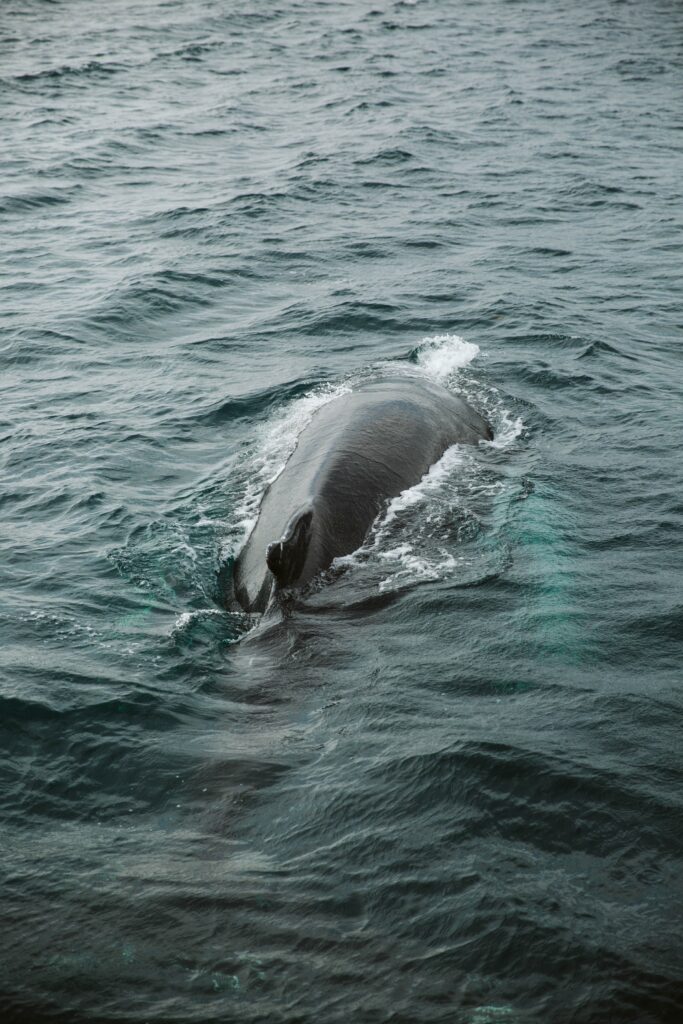Magic, legends, and breathtaking nature. Traveling to Iceland also means diving into a country with a unique history and folklore. Reykjavik, the capital, will welcome you with all its abundance and creativity, showing you unique corners and unique natural phenomena.
Adventures in cold Iceland can be full of surprises and wonders! Discover the most beautiful places that will not leave you indifferent.
Northern lights
This is one of those phenomena that you need to see at least once in your life. The Northern Lights are a unique sight that occurs when solar particles enter the Earth’s ionosphere and form iridescent light bands. This event can only be seen in regions close to the North and South Poles. Iceland is an ideal vantage point. The best months to admire it are the end of March and August when the sky is clear and dark. To fully enjoy it, you need to get away from populated centers. If you are in the capital and do not want to rent a camper or organize a night expedition, you just need to drive a few kilometers from the center to get to the Pearl or the Seltjarnners Peninsula.
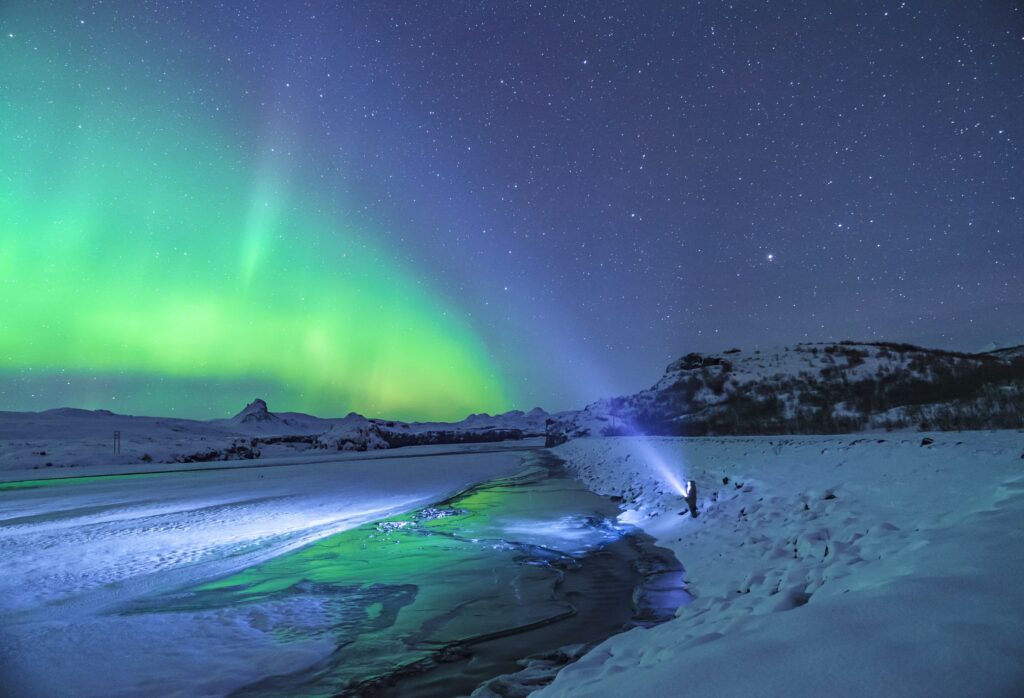
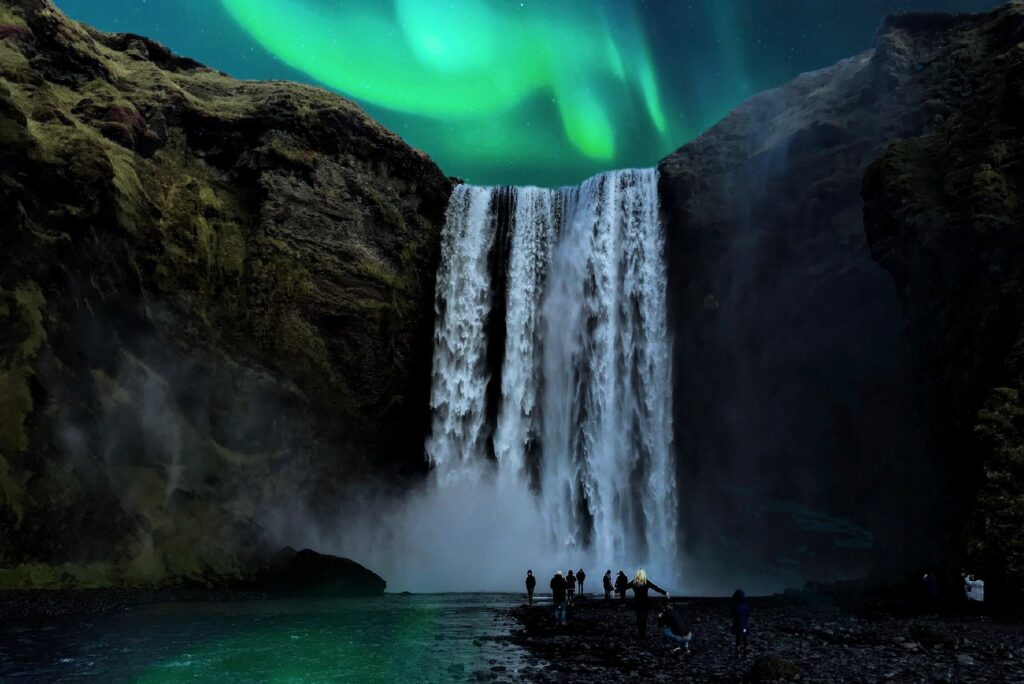
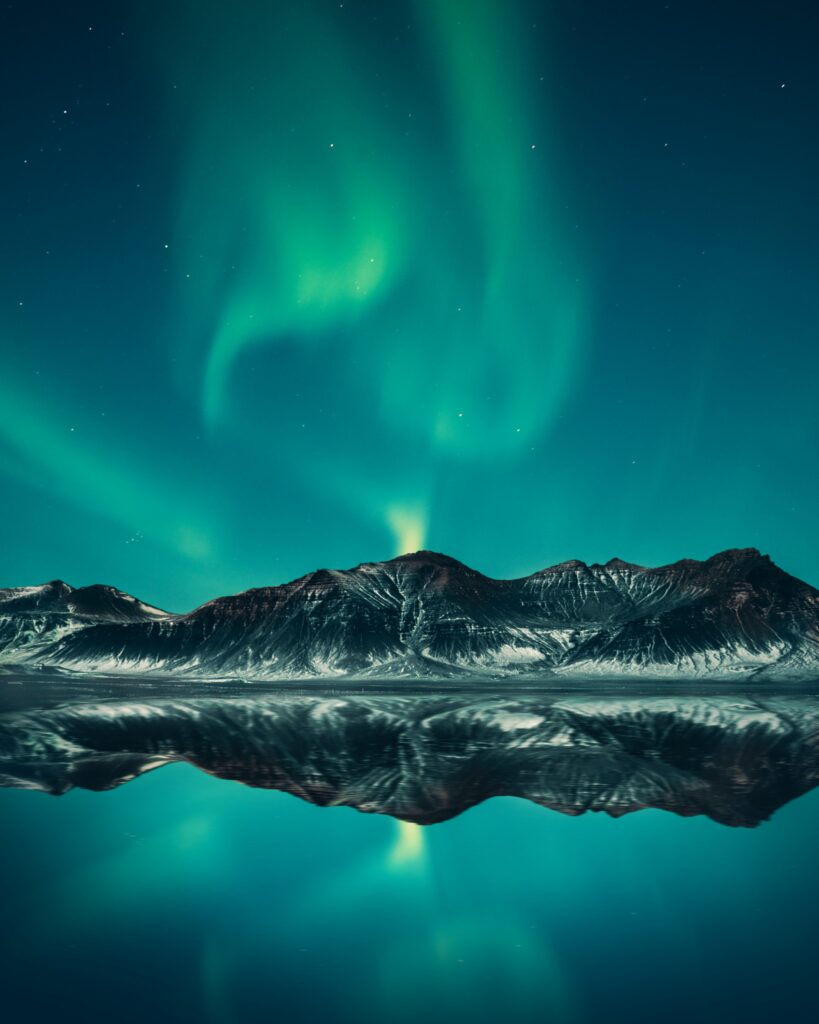
Beaches and other places especially suitable for admiring the northern lights, perhaps on the south coast, near Vic, between the waves and rocks. There are also some very popular places, such as the iceberg lagoon Jokulsarlon on the southeast coast. A few hours’ drive from the capital, you can go to Snaifellsnes, a wilderness area without noise pollution. Another very popular place is Skogar. To always be aware of when it is better to go hunting for the Northern Lights, you can download the Aurora Forecast app, without forgetting about the numerous tours that are organized by specialized agencies and guides.
Blue Lagoon
The next stop is a kind of open-air resort located in the southwest of Iceland, on the Reykjavik Peninsula. The water in this lake reaches 39 C, and its bright blue color contrasts with the framing of dark lava (4 meters high), covered with moss, in an atmosphere that seems suspended, thanks to a steam curtain. It is also especially popular due to the healing properties of water rich in minerals, especially silicon and sulfur, which are useful for the treatment of skin diseases. This spa is one of the most visited attractions on the island, especially in summer it is necessary to book in advance to avoid long queues.
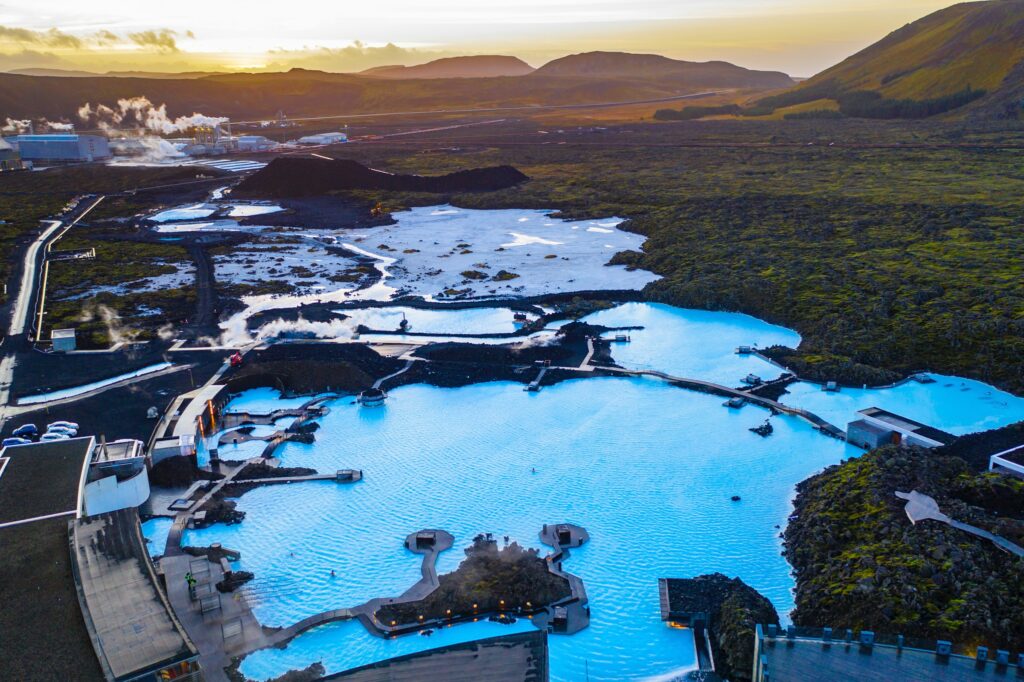
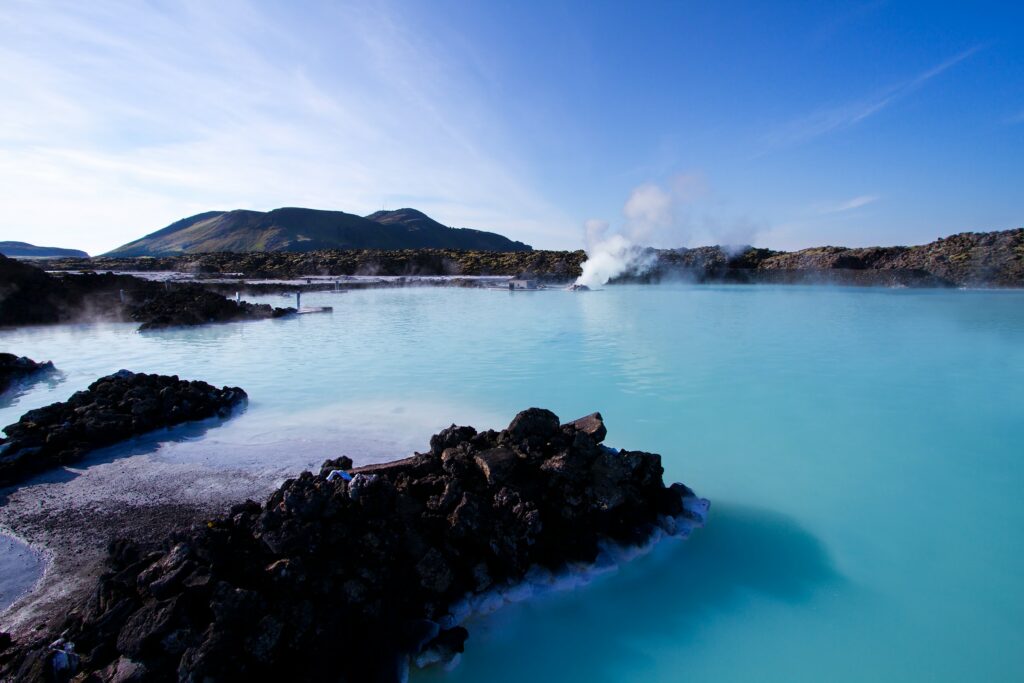
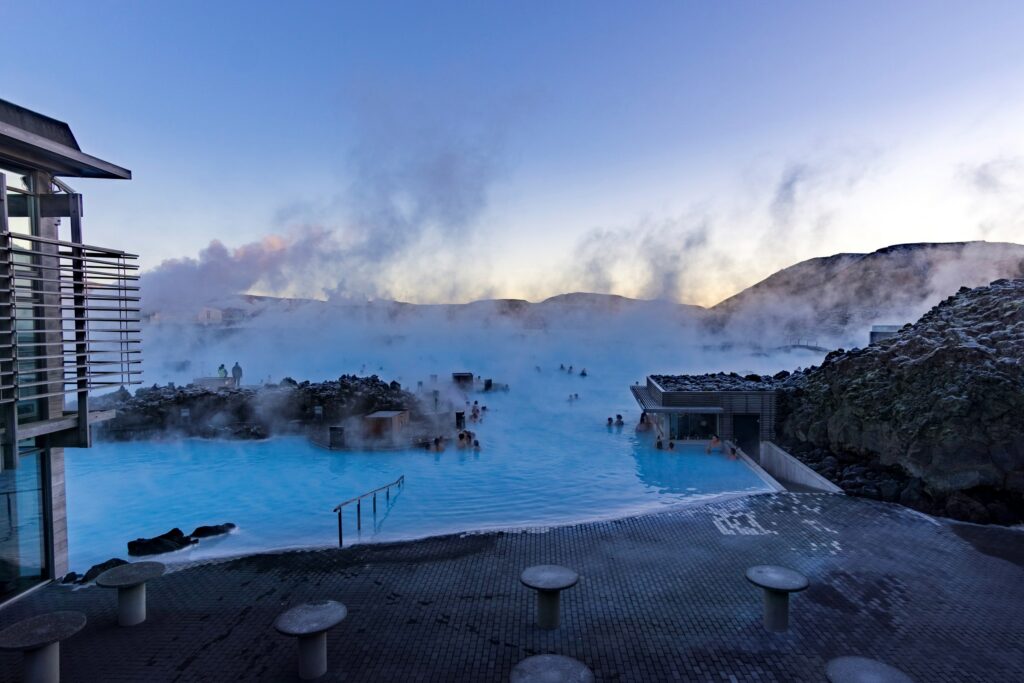
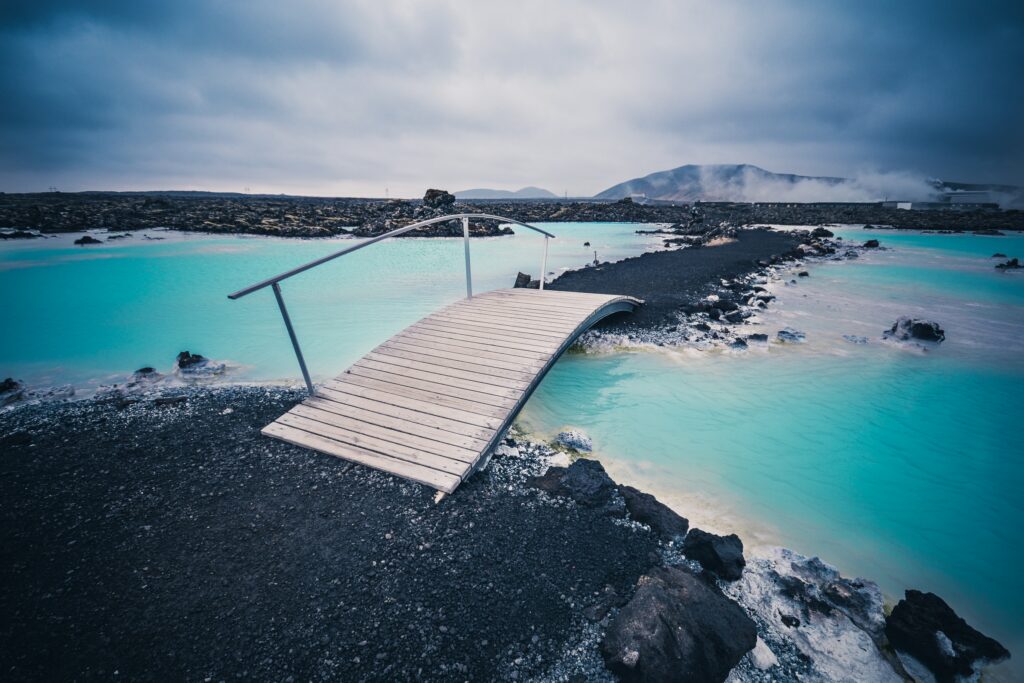
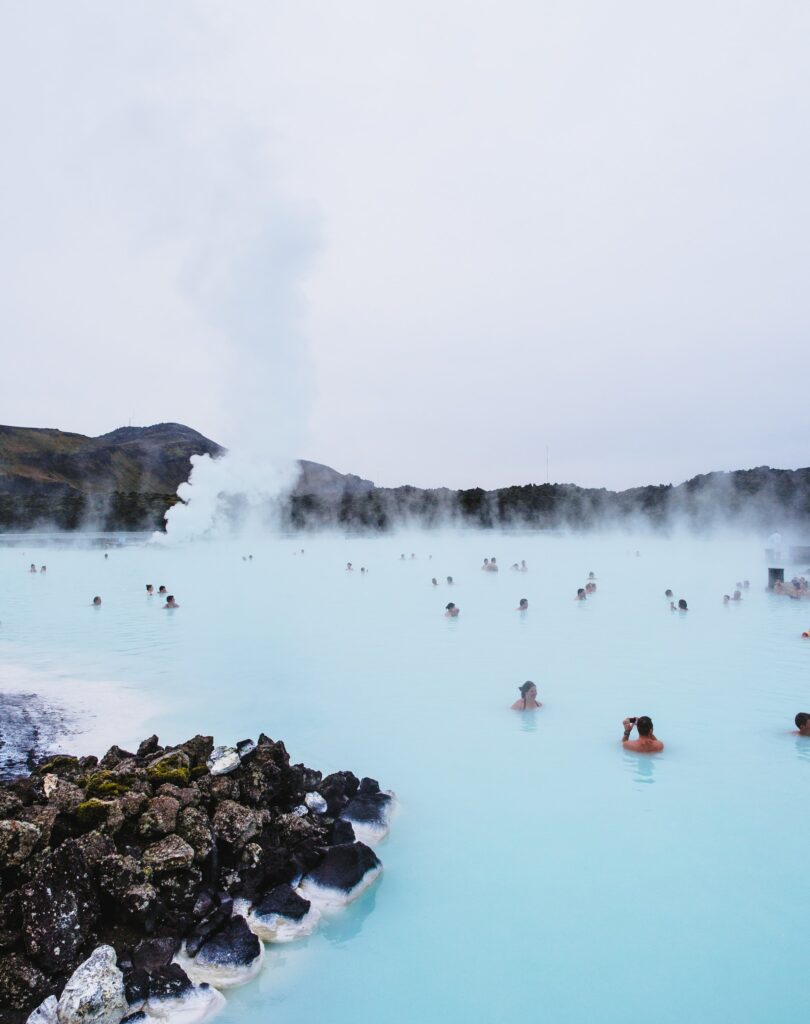
A structure has been built in this area, which has a shop, a cafe, and various services that will allow you to better prepare for the bathroom. The water comes from the Gunnhuver geothermal power plant, operating since 1976. We are located about 40 kilometers from the capital, with which it is connected by efficient route transport. Volcanic subsoil also allows for providing the household energy needs of the population. There is no shortage of other attractions nearby, such as Seltun, where a boardwalk will take you through fields of bubbling mud pools, deposits, minerals, and hot springs.
Reykjavik
Young, dynamic, and modern. Here it is, in a nutshell, the spirit of the Icelandic capital, where a third of the population lives, there is a port and an airport. The fish market still occupies a central place in the economy of this city, which, however, is also growing strongly in terms of tourism. There is a lot to see here, starting with the old port, which is full of shops, trendy clubs, and restaurants. Other attractions include Hallgrimskirkja Church, famous for its bell tower, which can be reached by elevator. It offers a panoramic view of the entire center of the capital.
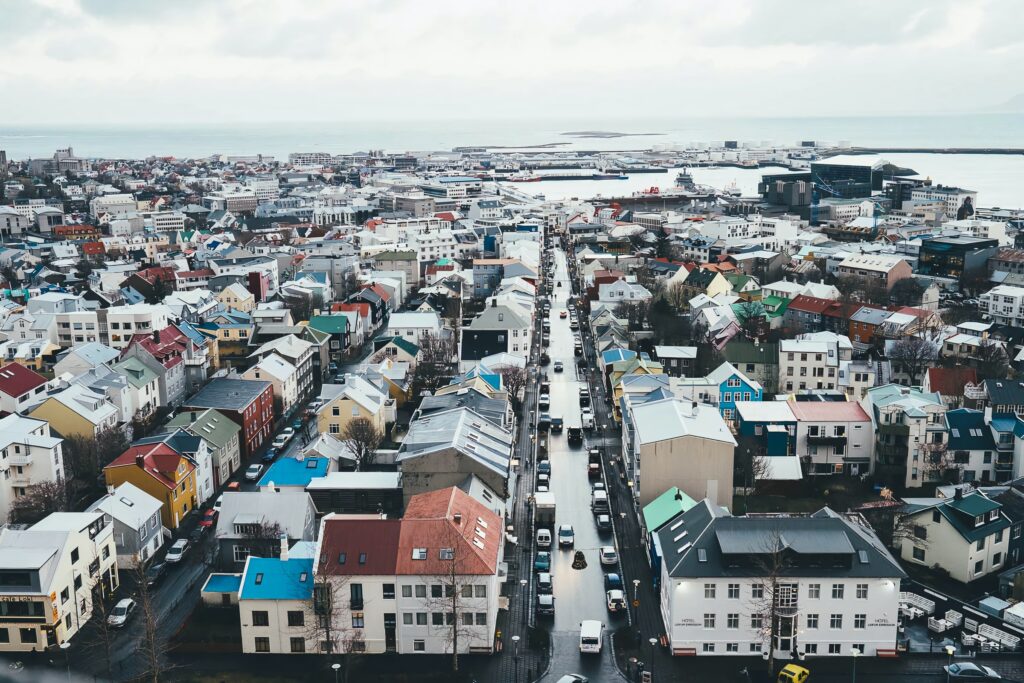
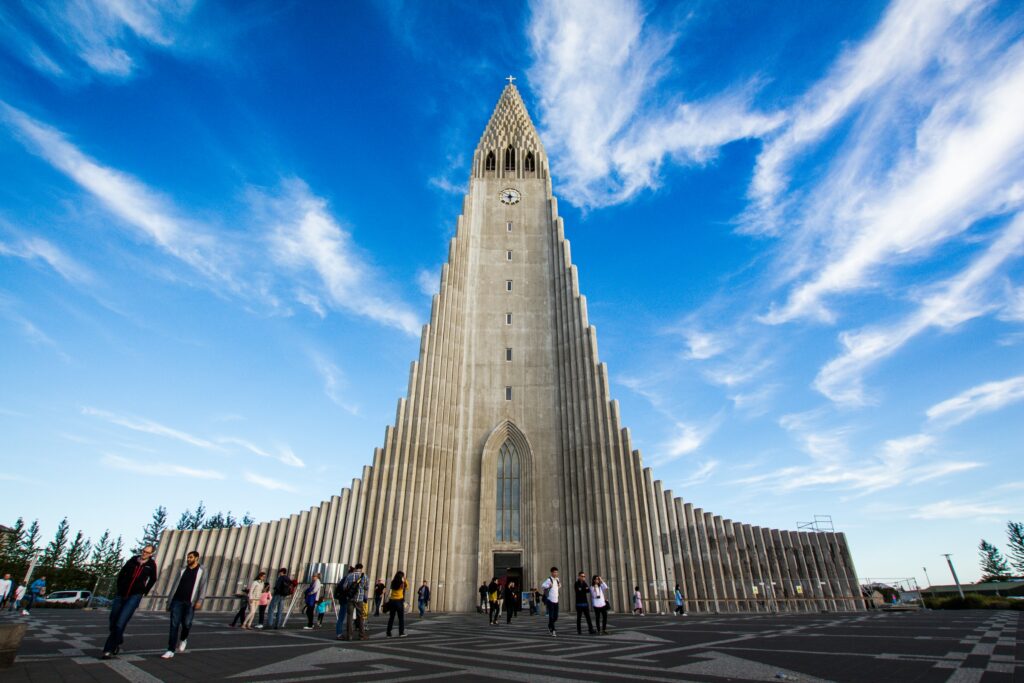
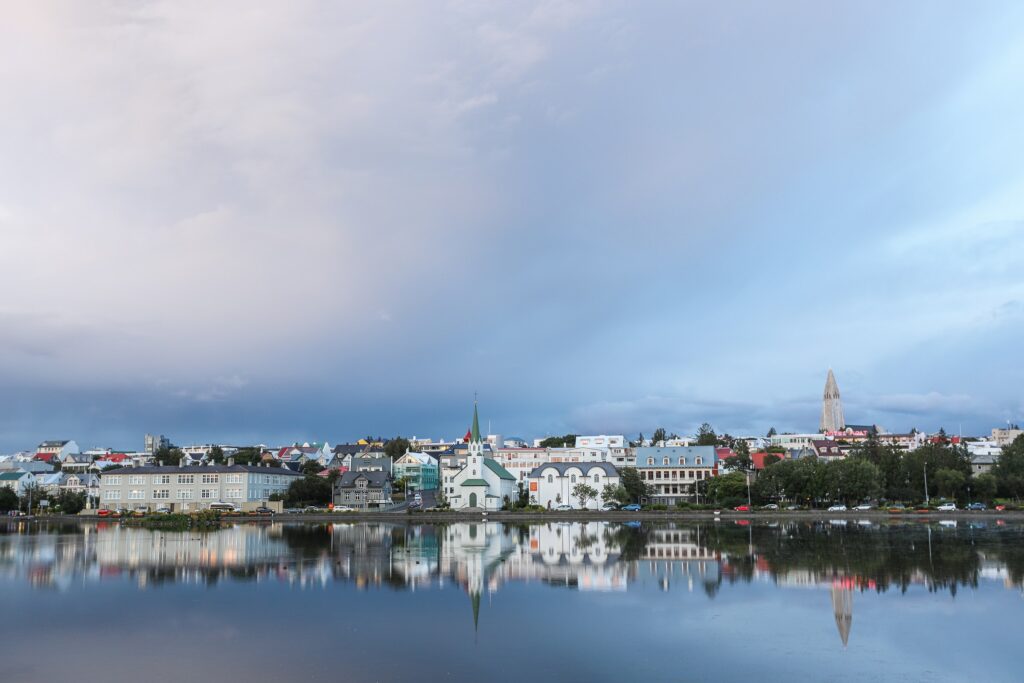
Another place that must be visited is Perlan, located on Escuhlid hill. In your program, you should include the Harpa Conference Center with its futuristic shapes resembling basalt columns. Harpa Concert Hall is home to the Icelandic Opera and Symphony Orchestra. Be sure to visit the famous Reykjavik flea market: here you can find traditional hand-knitted sweaters, as well as several local products to taste. The city also has parks, entertainment, and sports complexes, as well as several very interesting museums. The main one is the National Museum, which houses the entire Icelandic history.
There are also many things to do in the city, including hiking, horseback riding or walking. There is no shortage of pools with saunas, slides, botanical gardens, ice rinks, and aquariums throughout the city, especially in Laugardalur, known as the “Valley of Hot Water”. Reykjavik is a very lively city with good nightlife and cultural life. Numerous concerts, events, and fairs, including sports, are organized periodically. Bars, restaurants, and cafes alternate with live music on the streets of the center.
Skougafoss Waterfall
Southern Iceland is very famous for its waterfalls and legends. We are located a few kilometers from the village of Skogar, in a beautiful natural environment. Thanks to the 60-meter drop, the Skougafoss Waterfall offers many suggestions and beautiful photos. The sun beating on the water gives wonderful rainbows. On the right side of the waterfall, there is a staircase with more than 400 steps leading to the top of the waterfall.
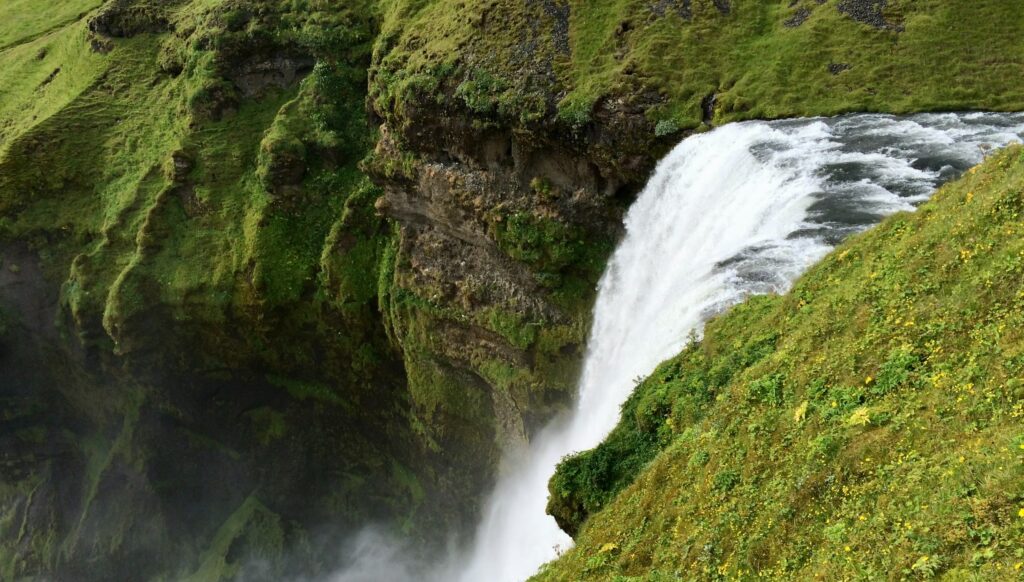
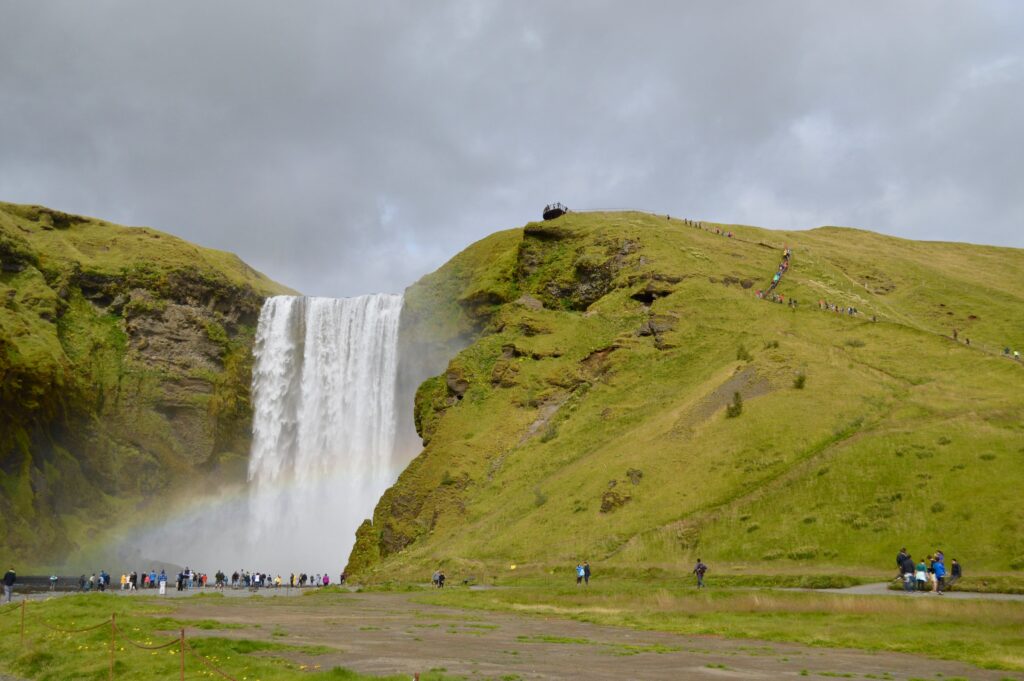
According to legend, the first Viking navigator who arrived in these places, Tracy, hid his treasures in a cave behind a waterfall. It is also said that anyone who swims in its waters can find an item that he has lost and has been looking for for a long time. To the east of the famous waterfall begins the Laugavegur trail, one of the most picturesque hiking trails in the world.
Gullfoss Waterfall
So we came to what is called the “golden waterfall” because of the golden reflections that adorn its waters. We are in the south of Iceland and the Hvita River makes two jumps of 11 and 21 meters, with a slope of 45 meters, and then ends in a deep and narrow gorge. Since 1975, it has been part of the reserve. Its waters are also easily accessible on foot thanks to the path. His theatricality and beauty earned him the nickname “The Queen of All Icelandic Waterfalls”. This natural gemstone recalls the battle that led the woman Sigridur Tomasdottir to fight against the Icelandic government to save the waterfall from a dam project on the river to be able to use hydroelectric power.
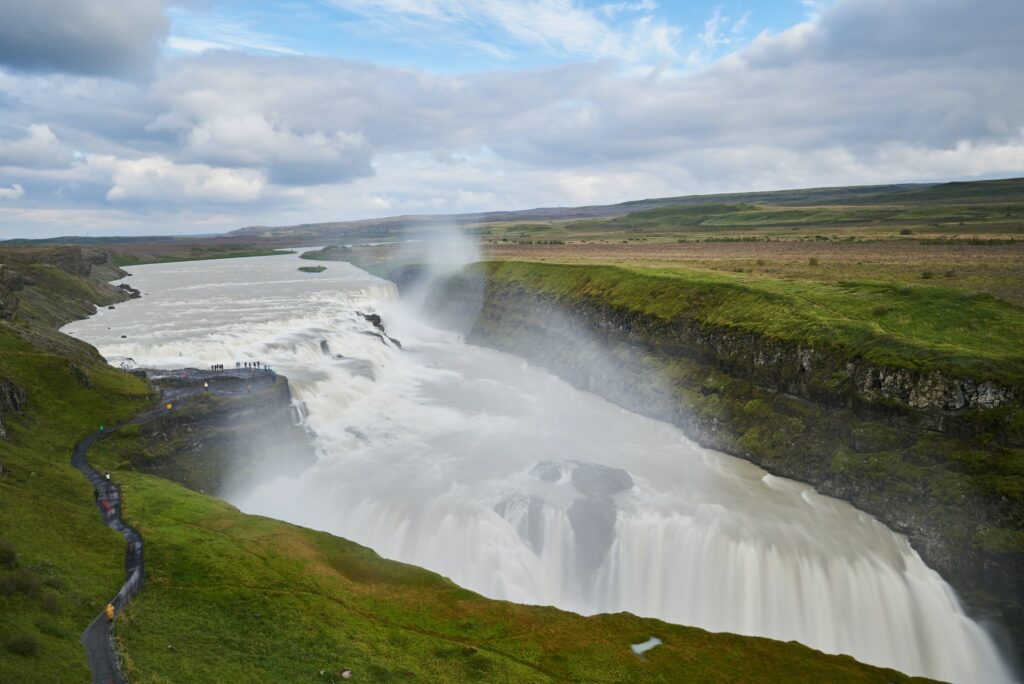
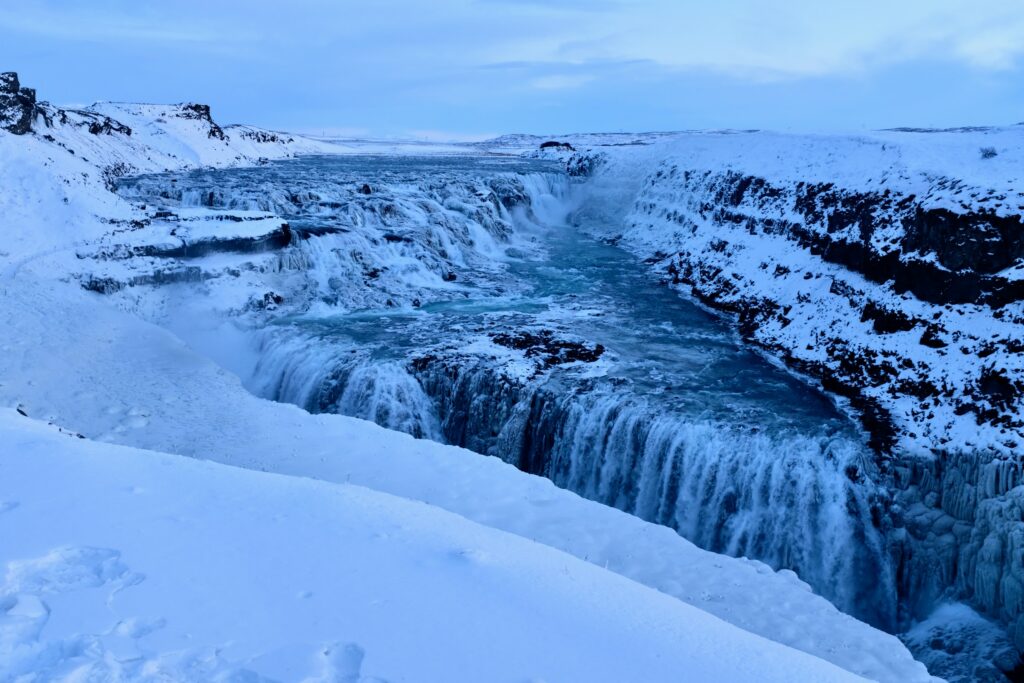
Godafoss Waterfall
We conclude the triptych of waterfalls with the triptych of Godafoss, called the “waterfall of the gods”, referring to an episode about a thousand years old, according to which statues of pagan gods will be thrown into the waters as soon as parliament decides that the future religion of the nation would be Christianity. You will find yourself in front of a truly impressive sight, the sound of water, the framing of nature that will surround the landscape, and the view that the waterfall with its charming water arch gives, even if the height difference is about twenty meters. Even today, many groups gather during the summer solstice to celebrate the “Festival of Light”.
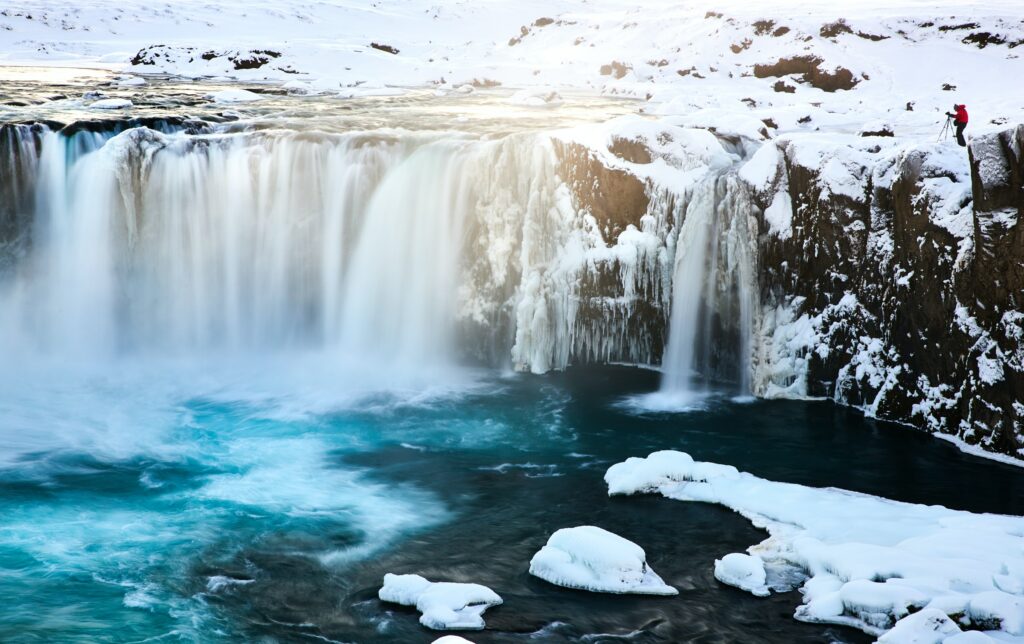
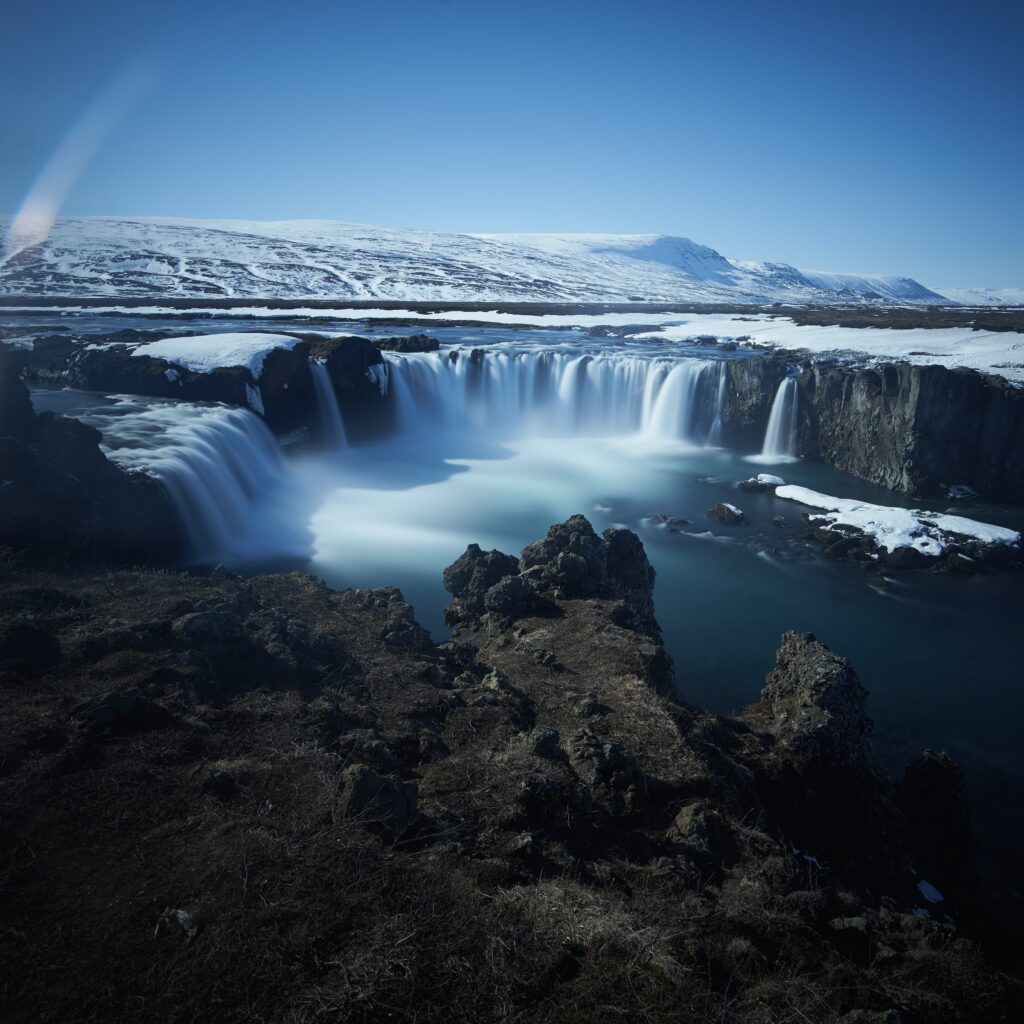
Geysers
Iceland will allow you to witness other natural phenomena that will leave you speechless: geysers or a source of boiling water that creates columns of steam and hot water as a result of spontaneous and periodic eruptions. An important role in explaining the origin of these phenomena is played by superheated gases coming from superheated magma and groundwater circulating in the subsurface. One of the places you should visit is the Haukadalur Geothermal Zone, one of the most popular and photographed areas of Iceland.
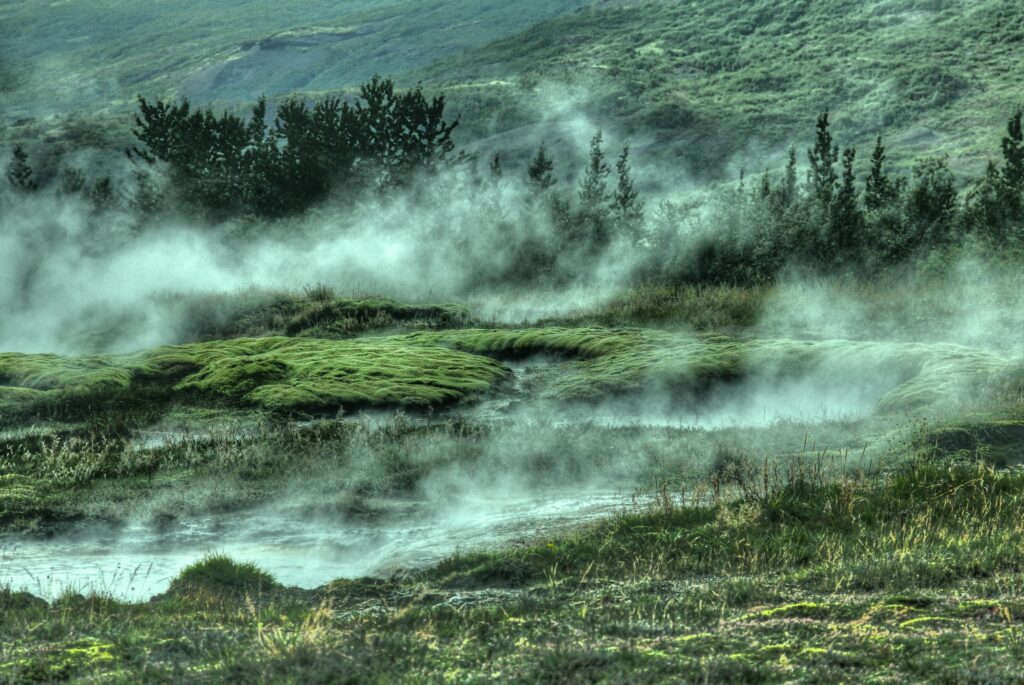
Another very popular area is Stokkur, which launches 18-20-meter jets every 4 minutes. The regularity of its eruptions attracts thousands of visitors and tourists every year. In this geothermal zone, there are, in addition to geysers, algae, mud pools, and fumaroles. The relief is a yellow hill covered with rhyolite and geyserite with gray-white shades. We are located east of the capital, near the river Hvita. The observation is very interesting: first, small bubbles begin to form in the funnel, after which one large bubble forms, which tends to swell, and then is overwhelmed by a column of smoke and steam. In Icelandic, the term “geyser” comes from the verb “gjosa”, which means to gush or erupt.
Mount Kirkjufell
This height (463 meters) is considered one of the most impressive viewing platforms in the world. Here nature will be an explosion of shapes and colors, and photographs will have an advantage. At the foot of this mountain, there is also a picturesque waterfall that flows into a small lake below. We are located on the Snaifedlsnes peninsula, in the north of the island.
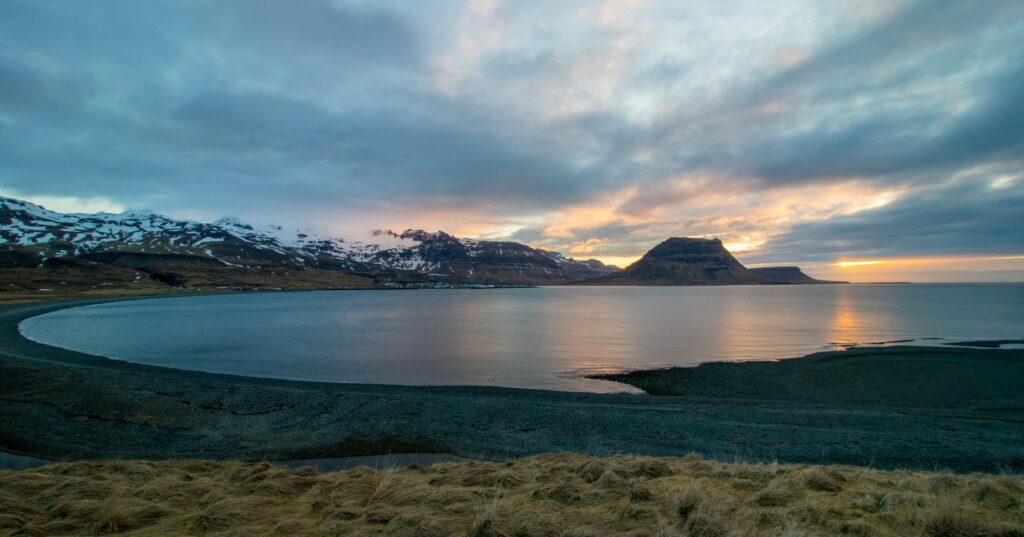
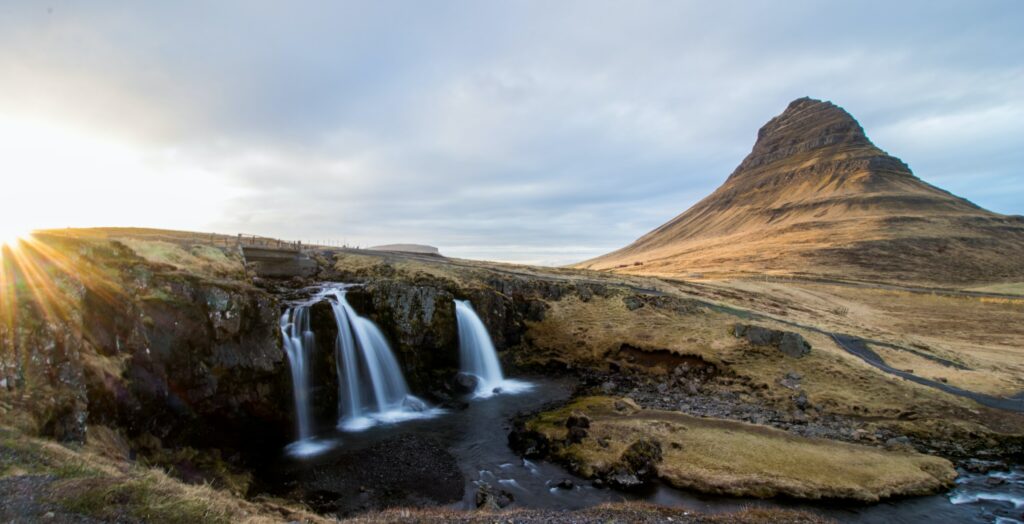
The name “Kirkjufetl” means “church mountain” and refers to its special form — the bell tower. This place has become even more famous thanks to the TV series “Game of Thrones”, which takes place in these parts for two seasons. In winter, the colors and atmosphere change completely. The hill is surrounded by colors such as white, brown, and blue, and if you are lucky, you can also witness the phenomenon of the Northern Lights.
Ísafjörður
This pleasant town is the main center of the Westfjord. This is a place with a cosmopolitan and lively soul, with its cafes and restaurants. The walk will show you a beautiful combination of modern buildings and wooden houses of various colors. Some of these buildings date back to 1700. Among the sights that should not be missed is the Isafjordur Church, a modern building with broken lines, as if imitating the waves of the ocean. A kind of tribute to the vivacity of the local population.
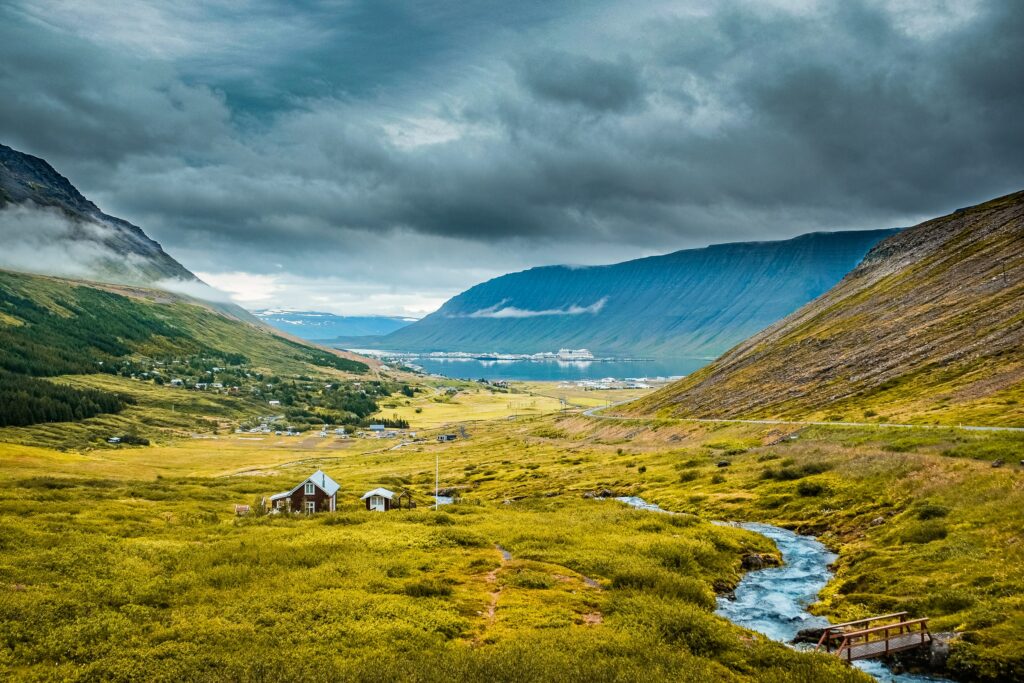
Your walk can also touch the Monument to the Fishermen of Iceland and then go to the Maritime Museum, located in the oldest building in Iceland. Between the nets, piers, and boats, there will be time to observe the arrival and departure of ships and, perhaps, hear one of the many stories concerning local fishermen.
Seydisfjordur
An unpronounceable name, which hides a fabulous town located at the end of a 17-kilometer fjord surrounded by snow-capped mountains, from which picturesque waterfalls descend. Colorful wooden houses (built at the turn of the century) together with romantic views, this place in the east of Iceland will give you a lot of emotions. One of the most interesting buildings is the so-called “Blue Church”. The city also houses a Technical Museum, where you can get information about the local realities of fishing and about the technological changes that have taken place in the area over the centuries.
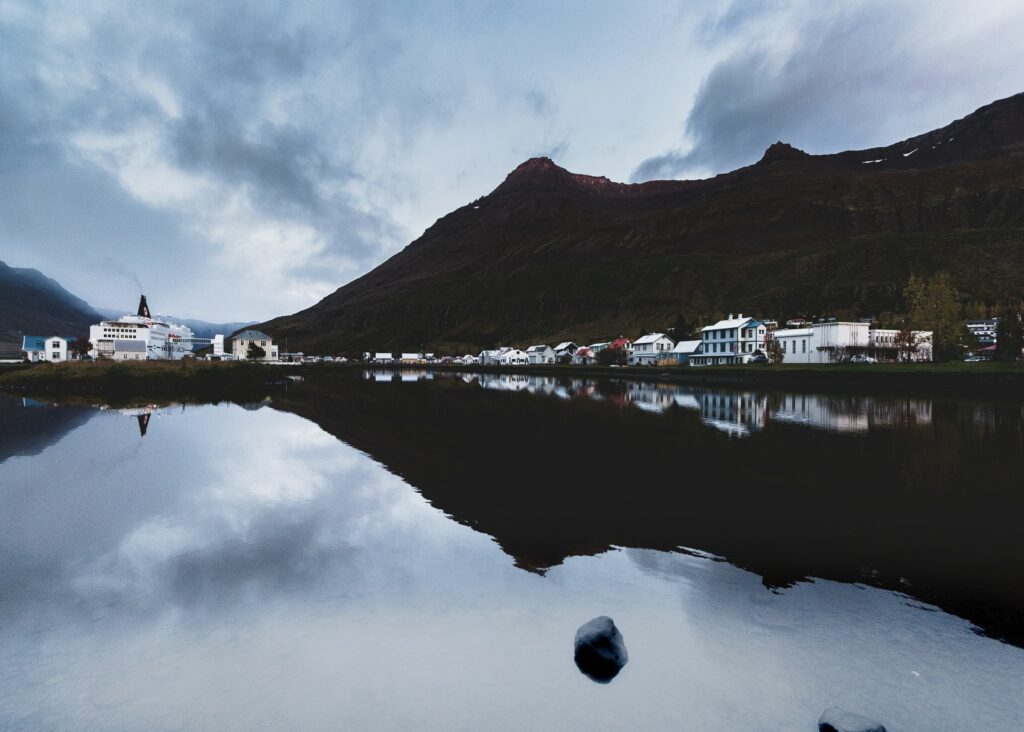
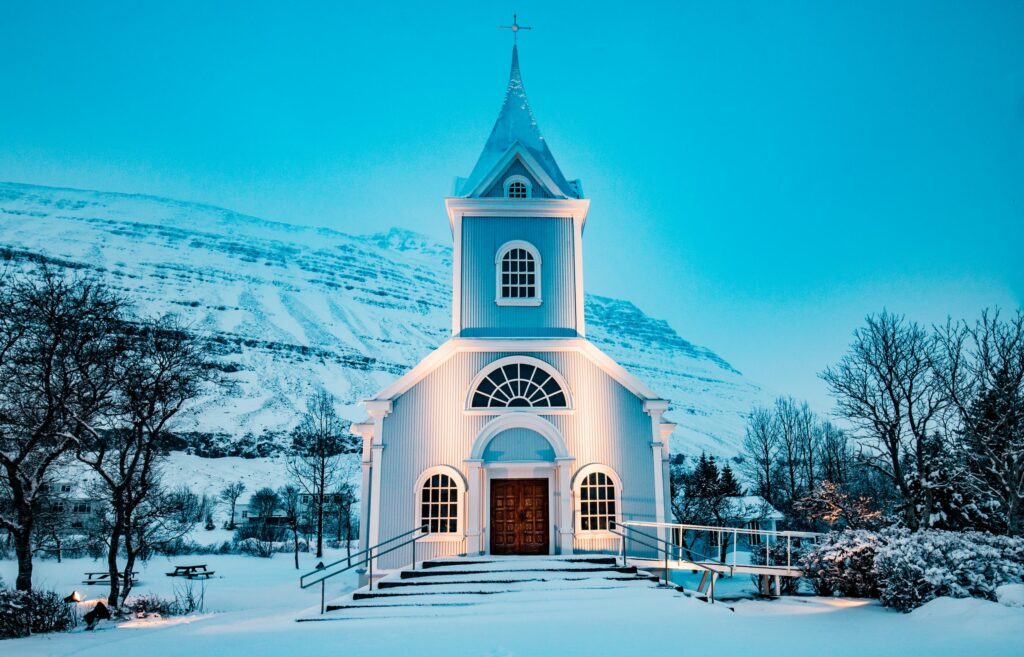
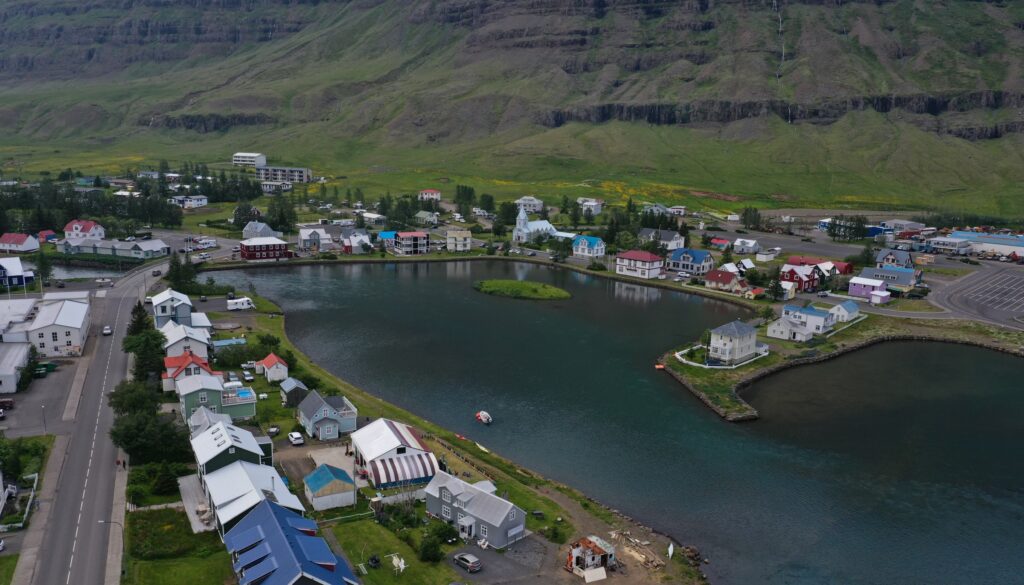
Whale watching
One of the most interesting sea excursions is the one where you can admire whales. Among the villages that are considered the most suitable, of course, there is the village of Husavik, which also has a museum dedicated to cetaceans. During these trips, which are also very popular among children, there will often be the opportunity to see dolphins and killer whales, as well as humpback whales and blue whales. So you should always have a camera at hand. Iceland’s waters are home to at least 20 species of whales, and the country has become a hub specializing in these activities.
